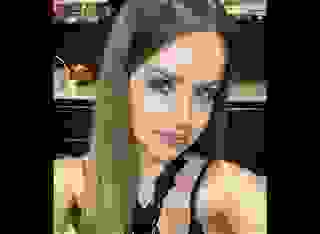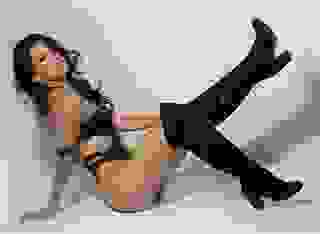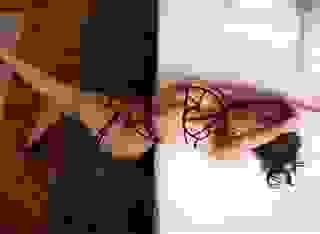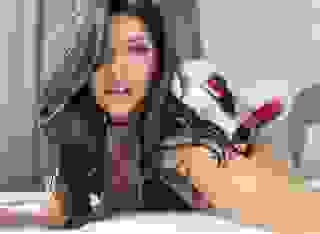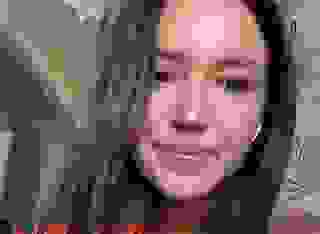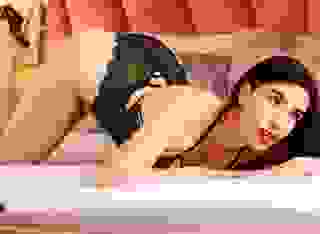- How To
- Putting the “Lit” into Literotica
Note: You can change font size, font face, and turn on dark mode by clicking the "A" icon tab in the Story Info Box.
You can temporarily switch back to a Classic Literotica® experience during our ongoing public Beta testing. Please consider leaving feedback on issues you experience or suggest improvements.
Click hereLiterature is defined as "books or writings published on a particular subject. Considering the name selected for this site, that subject is most often erotica. In other words, the literary expression of erotica. (Let's assume that the audio and illustrated content on the site originated in a written form prior to conversion)
Many readers aren't here seeking the prose of Hemingway, T.S. Elliott, or Jane Eyre. That's okay, some people like to watch porn without a plot. Conversely, there are many other readers who value a well written erotic story and appreciate the skills of the authors who deliver these. Based on feedback I have read on stories here and comments from other writers, there are many readers on this site, and probably even some writers, who do appreciate the literary aspects of the stories published on Literotica.
Readers unfamiliar with what constitutes literature may not appreciate the skills of a writer who employs these components effectively. In addition, some authors here are novices at writing and are lacking in the knowledge of what components are required to build a story, and which are optional for a story to resonate with readers and still hold value as a literary work. Grammar and typos aside, there are several techniques in literature that can greatly enhance a story, both for the readers and for the author.
It is for these readers and authors that I am providing the information below.
There are two major components involved in literature: "Elements" and "Devices". These define how a story is constructed rather than what the story is about.
There are ten literary elements which relate to the components of a literary work (character, setting, plot, theme, frame, exposition, ending/denouement, motif, titling, narrative point-of-view). These are technical terms for the "what" of a literary work.
There are more than a hundred common literary devices (techniques) which can be employed by an author to produce an effect (tone, irony, figurative language, symbolism, foreshadowing, etc.). You don't need to know the difference between elements and devices. Hopefully, the descriptions of the most common ones below will make their use self-evident in a story.
In alphabetical order:
Allegory:
An allegory is a story that includes such forms as fable, parable, and apologue. An allegory may have meaning on two or more levels that the reader can understand only through an interpretive process. Typically, even the characters in an allegory are symbolic to a meaning that the author is trying to convey. Classic examples include "The Tortoise and the Hare", "Animal Farm", and "The Faerie Queen".
Allusion:
Allusion is when there is brief, indirect reference within a story to another work of art, person, or object not otherwise part of the story. Alluding to these other things can complicate or deepen a reader's understanding of the story. An example would be, "The sight of her ass was like kryptonite for him", alluding to Superman's one weakness. Another example would be a reference in a story about details in a different story.
Antagonist:
The antagonist is the character that stands in the way or creates a conflict for the protagonist to deal with. Frequently portrayed as a villain in literature but the character doesn't have to be. Sometimes referred to as the "Foil" -- a character intended as a thematic opposite of the main character. For example, a black "Bull" would be a natural antagonist for the white cuckhold husband protagonist.
Characterization:
Characterization refers to the act of creating and describing characters in a story. Characterization includes both descriptions of a character's physical attributes (what they look like) as well as the character's personality. The behavior of characters; how they act, think, and speak also adds to their characterization. Characterization can be described as "dynamic" if the character changes a great deal over the course of the story, or it can be described as "static" if the character remains the same throughout. Similarly, if a character is very complex, the characterization would be considered "round", while is straightforward in his or her motivations, they would typically be considered "flat".
Conflict:
This refers to the central problems or challenges within the story. It has been postulated by scholars that there are five primary conflict types that appear in literature: Man vs, Man; Man vs. Himself; Man vs. Society; Man vs. Mythical or Paranormal force; and, Man vs. Technology. Each of these conflict types could consist of either "internal" (feelings, emotions, thoughts) or "external" elements (a person or situation) or a combination of both.
Exposition:
Exposition refers to the background plot information. For example, the author may provide certain details about a character's past in order for readers to understand the story. Exposition can be deliberately withheld and/or provided early in the story. The exposition can occur through dialogue, the narration, and/or inter chapters. "Flashback" is a type of exposition discussed later. Exposition is different than a "Frame Story" as also discussed later.
Figurative Language (Metaphor, Simile, Hyperbole, Synecdoche):
This technique refers to using a word or phrase to convey special meaning or effect. Metaphor - A word or phrase that compares two similar things; Simile -- A word or phrase that compares two similar things using "as" or "like"; Hyperbole -- A dramatic exaggeration; Synecdoche - A part is made to represent the whole or vice versa.
Foreshadowing:
This refers to hints by the author about what is to come in the narrative through a specific description or image. Typically used to build anticipation and help construct a story's plot. An example would be fate-building dialog such as, "We'll see about that!", or "If she kisses him again, I'll kill her."
Flashback:
This exposition technique refers to when an author interrupts present events in the story to relate events that happened in the past. Care should be taken to either maintain the existing POV, or to make any POV transitions clear and consistent. (See the section on Narrative Perspective below)
Frame Story:
Often called a "prologue", a frame story is a literary technique where the author tells a story at the beginning of the work that sets the stage for the main story to come. A frame story is a part of the story as a whole and not to be confused with an exposition, a disclaimer, or author's note.
Image:
Images refers to a description of something seen, smelled, touched, or heard. Images do not merely represent reality for readers; they draw readers in and cement their imagination into the story. When E.B. White describes the barn in his classic, "Charlotte's Web", readers can almost smell the scene as written.
Motif:
The motif refers to a series of reoccurring details that have symbolic importance in the story. Darkness and light are common motifs that are used to compare characters, places, and events in a plot. For example, in "The Princess Bride", the phrase "as you wish" is a recurring story element symbolizing Wesley's eternal love for Buttercup.
Narrative Perspective (Point of View)
The POV refers to the point-of-view from which the story is narrated or told. The story can be from the first person point-of-view ("I saw..."), the less common second person point-of-view ("You saw..."), or the third person point-of-view ("He saw"). Notably, there are some important variations on all of these major points-of-view: First person protagonist - the person telling the story is also the main character. First person observer - the person telling the story is a secondary character in the story. Second person perspective - the reader is part of the story. The narrator describes the reader's actions, thoughts, and background using "you." Third person limited - the narrative follows around one character primarily and has access to his/her thoughts. This narrative perspective also describes things happening around him/her. Third person omniscient - has access to multiple character's thoughts and actions. Third person objective - describes only the actions of the characters. We see the actions of the book almost as if on a stage with no access or limited access to character's thoughts.
Note: Stories can switch between different points-of-view, but this should only be attempted by more experienced writers.
Personification:
This refers to when animals, inanimate objects, or places are metaphorically given the qualities of human beings. Personification is critical to fantasy and many science fiction stories.
Protagonist:
Protagonist refers to the main character in a story. He or she doesn't have to be a hero in the story, but their role should be clear to readers. The protagonist is frequently the narrator in first person POV stories.
Resolution (Denouement):
The story's final "untying" or conflict solution is the resolution, or denouement. A chapter within a story can end without a resolution, and some short stories or series episodes purposely end without resolving the plots main conflict.
Setting:
Setting refers to when the story takes place (time periods), where it takes place (geographic locations), cultural contexts, immediate surroundings, weather, times of day, or times of year mentioned in the story. A setting can be used to create a mood, as an integral part of the plot (creating a conflict, etc.), to bring out certain aspects of the characters, and can also be used figuratively or symbolically to hint at the story's theme or reflect an interior state of the characters.
Symbolism:
This refers to when a word or object stands in for something of greater significance within the story. One classic example is the yellow brick road in "The Wizard of Oz" representing life's journey. Symbols can be complex, inferring or representing more than one thing in the same story.
Theme:
The theme is the message that emerges from the narrative of a story. Popular examples of themes would include: Good versus evil, betrayal, or coming of age. The theme should not be confused with the story's "plot" which is the way that the theme unfolds in the tale.
Tone:
Tone refers to the attitude the work takes toward the audience and plot. A work's tone can be playful, serious, upbeat, confrontational, teasing, steamy, romantic, ironic, intimate, haughty, objective and any other number of great adjectives used to describe an attitude toward something.
With an understanding of what goes into constructing a story, my hope is that both readers and writers gain a greater appreciation for what they find here on Literotica.
- COMMENTS
Funny. Just yesterday, it occurred to me that I had not seen anything from Mr. Brandt in quite a while.
Then this little gem popped up.
I don't think it was offered as a "How-to" (build a story) but more as a "Bill of Materials" with Options explained.
Even as brief as they were, his definitions or explanations surpassed those from my high school English teacher provided over a half century ago.
Sadly, most of those who might be enlightened or possibly inspired by this will pass it by.
I really wish more starting authors would read these "how to" s Sometimes I like to read stories just for the raunchiness of it but I like a comprehendible story to be told. If I wanted baseless plotless sex well there's plenty videos for that. I've always thought sex has a mental aspect if it's to be any good so I like my smut to be engaging instead of word vomit. One issue that I haven't seen here yet (hopefully never) is people getting AI to write smut stories and then posting them. I know Reddit has been infected with the AI bug worse then C19 could have ever dreamed to be. So thank you for trying to help authors make their works more presentable and comprehensible.
Thank you. I understand why I enjoy most of your stories. Now please get back to writing. ;-).
Seriously there are many here with the raw talent and with good ideas that would do well to employ some of what you have presented.
Keep up the good work!
I 1dr Y
Thank you for taking the time to write this. There can be so much to the craft of writing, that it helps to have some of it broken down into bits and pieces, to gradually put it all back together again.
Thanks for your thoughtful article! For me, great characters might outweigh other considerations.
5
